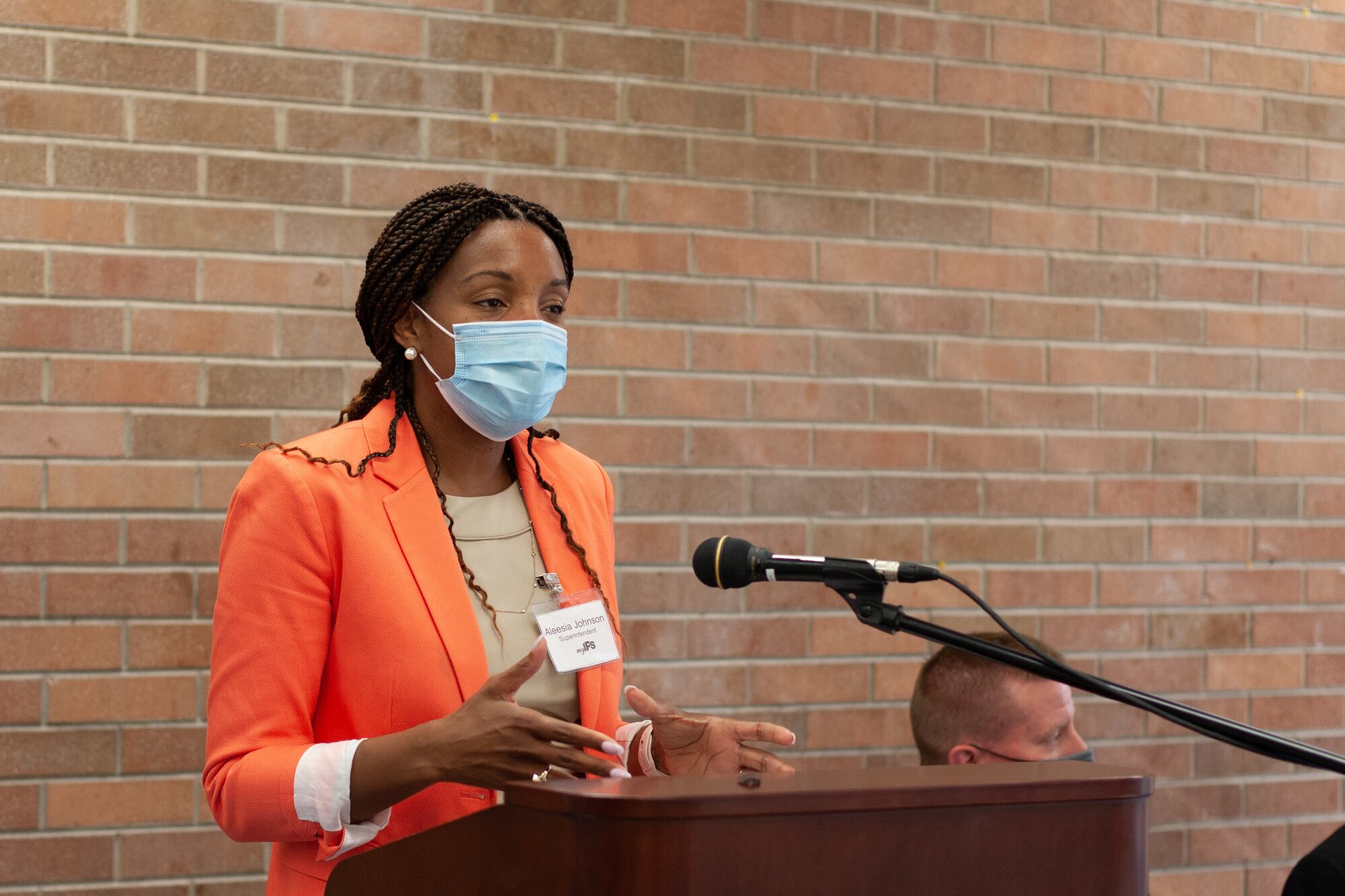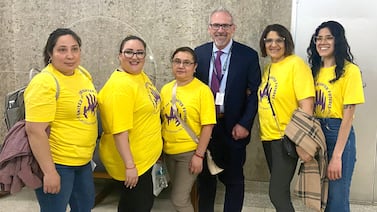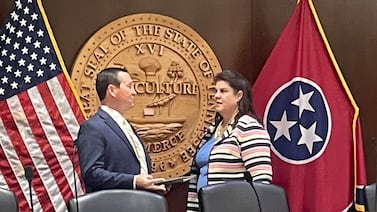The future of Indianapolis Public Schools came into clearer focus Thursday as district officials outlined five potential solutions to the district’s financial challenges, including merging small schools and reconfiguring middle school grades.
The final meeting of the Rebuilding Stronger committee capped a series of spring presentations on the district’s major hurdles, like declining enrollment at neighborhood schools that has led to budget woes and underutilized buildings, as well unequal access to high-demand innovation programs.
Dwindling enrollment is a national issue that has already led to school closures in cities like Chicago, Detroit, Oakland, and Philadelphia. At IPS, enrollment at district-run neighborhood schools has dropped more than 40% since 2010, while enrollment at innovation network schools has increased tenfold since 2015.
IPS officials presented a series of possible solutions that would likely affect most students at the district. Several proposals could work in tandem to relocate students to larger, better-funded, and better-performing programs. At the same time, the district would close schools with low enrollment that have fallen into disrepair.
Community members at the meeting raised several questions about the plans. They asked how merging schools would affect staff; whether the district has the facilities to accommodate much larger middle schools; how the district would provide transportation to families whose neighborhood schools shutter; and what the district and its students stand to lose by closing small programs.
“Anything we do requires a tradeoff of some kind,” said Superintendent Aleesia Johnson.
District leaders expect to present a final plan in September, after which it will head to a board of commissioners vote in October. Johnson said the district is still determining a future timeline, as well as the potential costs of each proposal.
Here are the five solutions the district is considering. It could adopt all or several of them.
Expanding high-performing programs
The district wants to expand access to its best schools, whether by adding seats in existing programs, or by replicating those programs in new buildings. In the case of the latter, officials said they would focus on the east, west, and south sides of Indianapolis, where traditionally fewer choice programs exist.
During community feedback, Amanda Milliken, principal of George Buck Elementary School, asked what metrics would be used to determine which programs were high-performing enough to be expanded or replicated.
Milliken also asked whether those metrics would guarantee success in every neighborhood school.
“It may be a great program for the northwest side, but is it a great program for the southwest side?” she said.
District officials said they would address such community questions in a future presentation, as they have throughout the series of Rebuilding Stronger meetings.
Reconfiguring middle school grades
Another possible solution would see the district reconfigure middle schools to serve grades 6-8. Currently, it has a mix of K-6, K-8, and 7-8 schools.
The reconfiguration would create larger middle schools that could better afford to offer extracurricular activities and advanced academics — something the district says seriously lags at neighborhood schools compared to charter schools.
Teachers would be better able to collaborate across a shorter band of grades, district officials said, and younger students would have more access to seats at redesignated K-5 schools.
But community members pointed out that IPS has shuffled middle schools in the recent past, moving the grades out of combined middle and high schools and into elementary schools in the hopes of improving achievement. They also asked whether that previous shift addressed the district’s original concerns.
Others asked whether parents of sixth graders would feel comfortable sending their children to new, large middle schools, and whether the district has the space to facilities to accommodate the idea.
Consolidating and closing schools
Closing small schools would be a versatile solution for the district. Fewer larger schools are less costly to operate than many small ones, and can offer more programming. Previous district presentations also highlighted the deteriorating physical state of some IPS schools and the cost to repair them.
“This is a way to move more students into warm, safe well-kept buildings that promote learning,” the district said in its Thursday presentation.
But not everyone has warmed to the idea. Deborah Wooldridge, a teacher at William Penn School 49 where Thursday’s meeting took place, asked what would happen when consolidated schools created large class sizes. She also asked whether staff would have to reapply for their jobs at new schools.
Others pointed out that the district would contradict itself by seeking to offer the experience of high-demand choice schools — which tend to be small — to more students, while also creating more large schools.
Still others asked about the demoralizing impact that shuttered school buildings might have on neighborhoods.
Creating geographic enrollment zones
The district is considering two solutions to improve access to choice programs.
One would create geographic enrollment zones, in which IPS families would be able to enroll at traditional and choice schools that are within their zone. Currently, district neighborhood schools have their own enrollment boundaries, while some choice schools have zoned enrollment areas.
Under the proposal, families would not have to change schools if their address changed within their zone. The district hopes that this proposal would reduce student mobility at neighborhood schools without destabilizing its choice options.
Community members asked whether this proposal would lead to less available choice at IPS.
Eliminating proximity priority
The district’s other enrollment proposal would remove proximity as a lottery consideration for its preferred schools, meaning all students within a given enrollment zone would have the same chance of going to a certain school.
Officials said district data shows that high-demand choice schools serve fewer students of color due in part to the priority given to siblings of current students and families who live within half a mile of the school.
The district would implement this plan in conjunction with grade reconfiguration for middle schools, which is meant to open more seats at high-performing K-5 schools. As a result, the district hopes, more families would have access to the choice process.
Aleksandra Appleton covers Indiana education policy and writes about K-12 schools across the state. Contact her at aappleton@chalkbeat.org.








